AD FS with LDAP User Directory
Goal
Configure SAML Single Sign-On to work with AD FS and an existing LDAP based directory.
Prerequisites
ADFS 2.0/2.1/3.0/2016
Atlassian application with a user directory of type LDAP
Your Atlassian application must be accessible via HTTPS. (read more about it in the Atlassian documentation, i.e. for Jira or Confluence)
This is necessary because ADFS accepts only HTTPS-URLs for SAML endpoints.
Video Guide
The video below is an installation guide for setting up our SAML SSO app with ADFS (watch on YouTube).
Step-by-Step Setup Guide
Install the SAML SSO app
In your Atlassian product, open the in-product marketplace as described in the Atlassian documentation.
Search for "resolution saml" and click "Install" for SAML Single Sign On (SSO) by resolution Reichert Network Solutions GmbH.
After the installation is complete, click on Manage, then choose Configure.
Now, you are on the Add-on / app configuration page and the first step of the setup wizard will appear.
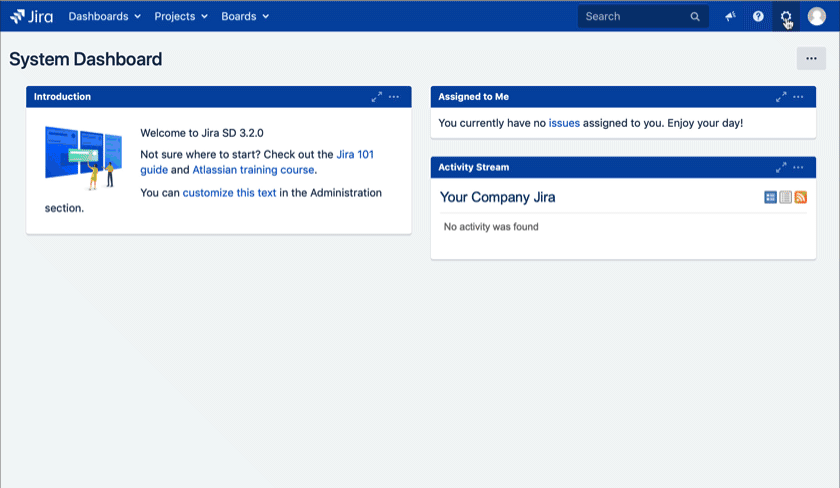
Configure SAML SSO app
Add new Identity Provider (IdP)
Click on Add new IdP to start the wizard.
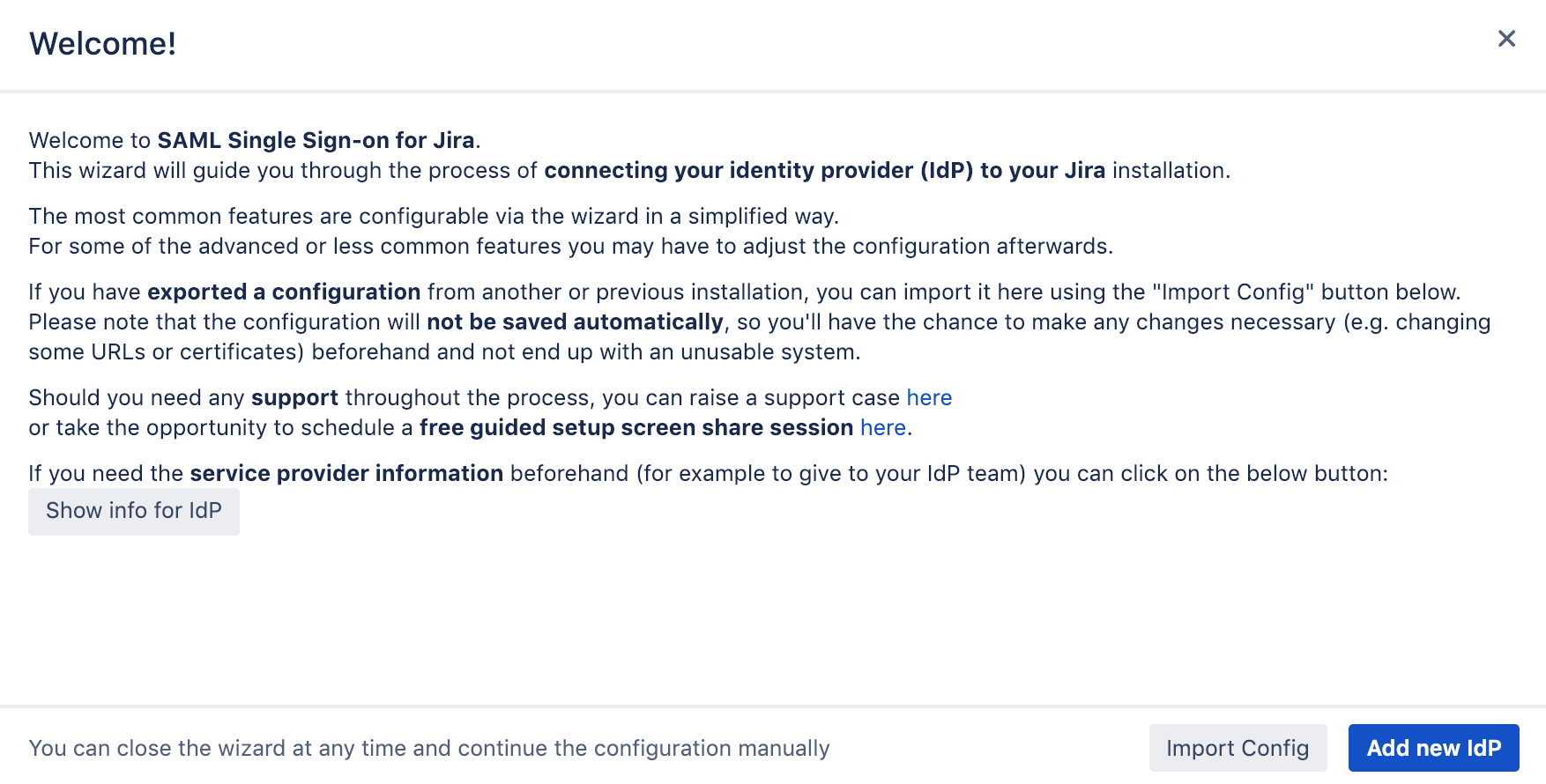
Adding a new IdP can also be done outside the wizard in the app configuration section Identity Providers

Select Microsoft AD FS as IdP Type.
You may also change the name and add a description. The name needs to be unique.
Click on Next.
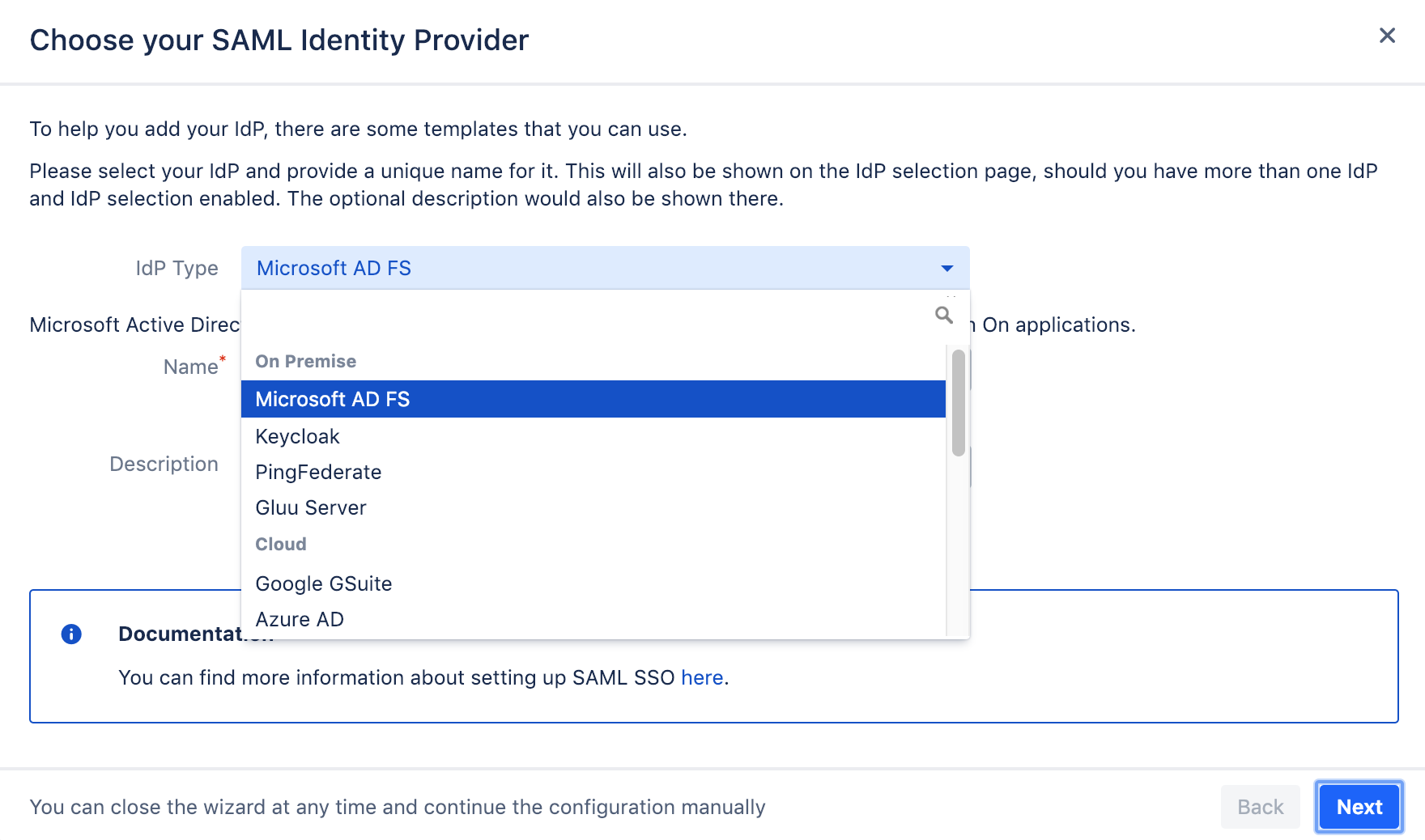
Retrieve SAML Metadata for ADFS
The next step enables you to retrieve the information ADFS needs to work with our SAML SSO app.
There are two ways to retrieve the metadata:
SAML Metadata via URL
If the server with ADFS has internet connection to your Atlassian instance, copy the SAML Metadata-URL shown on the screen.
If the server with ADFS has no internet connection, proceed with the next chapter, "SAML Metadata via XML file"
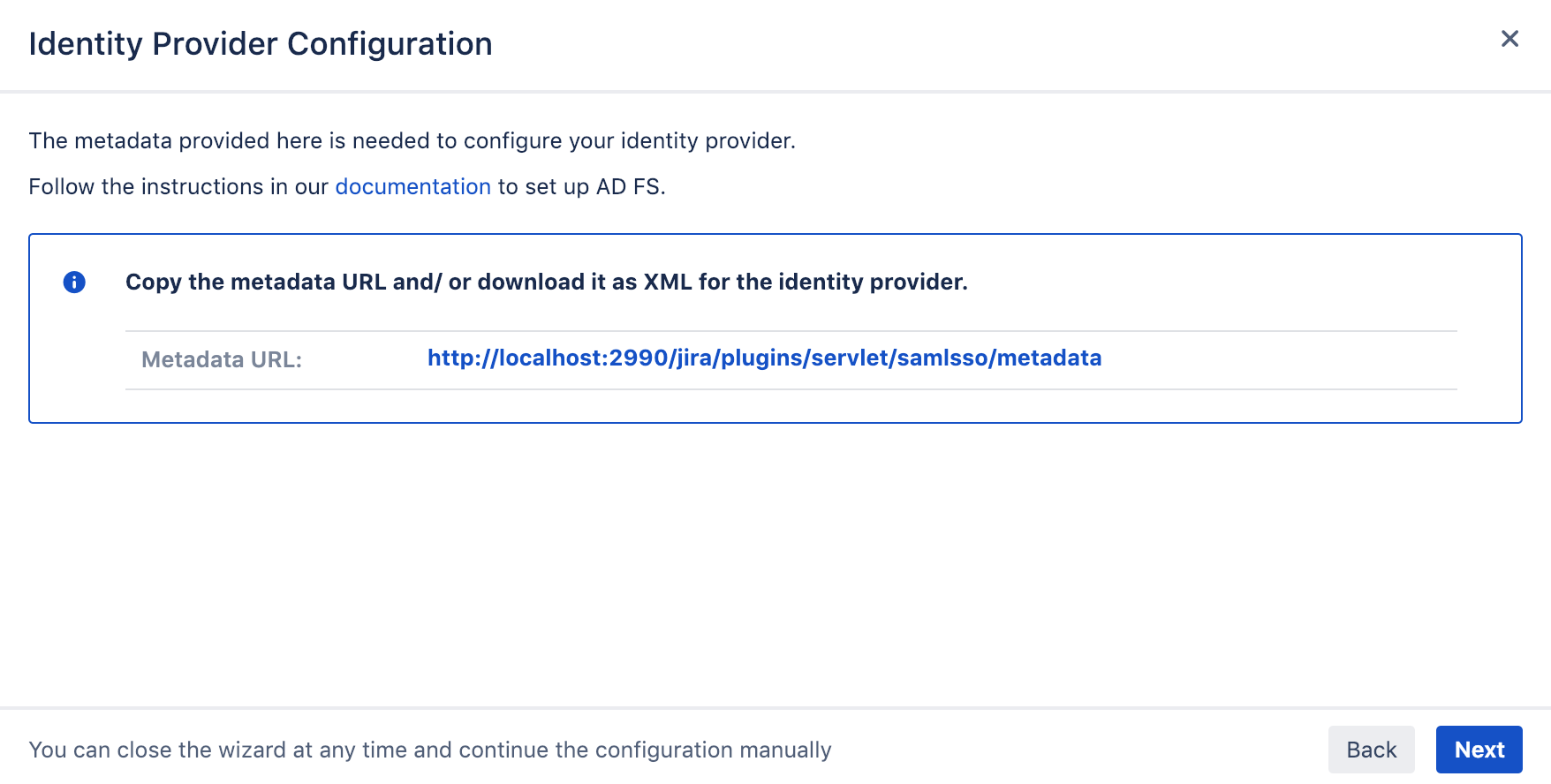
SAML Metadata via XML file
Instead of copying the Metadata URL, right click on the link instead and select save the link as, which will provide a download/ file metadata.xml.
Click on Next already but you can now pause the SAML SSO setup for now and proceed with the next chapter configure the ADFS side:
Configure ADFS
For the remaining configuration of ADFS, please proceed with the steps described in the Configure ADFS tutorial linked here.

Import SAML IdP Metadata
Now that the ADFS configuration is complete, you can go ahead and resume configuration on the SAML SSO side.
We now need to import the metadata from ADFS.
You can choose from the following options in the Metadata Upload dropdown:
Help me generate a metadata URL
I have a metadata URL
I have a metadata XML file
I want to past my metadata XML
I don't have any metadata and want to enter the data manually
Option 1 is the easiest to use, provided that your Atlassian instance has connection to your ADFS server.
It will create the URL based on the host name of your ADFS server. With Option 2 you could paste this URL manually.
Import via metadata URL
Provided the Atlassian instance does have access to ADFS, simply select the first option and click Import.
You should only need to tick the Accept all checkbox, if you are working in a test environment with self signed certificates.
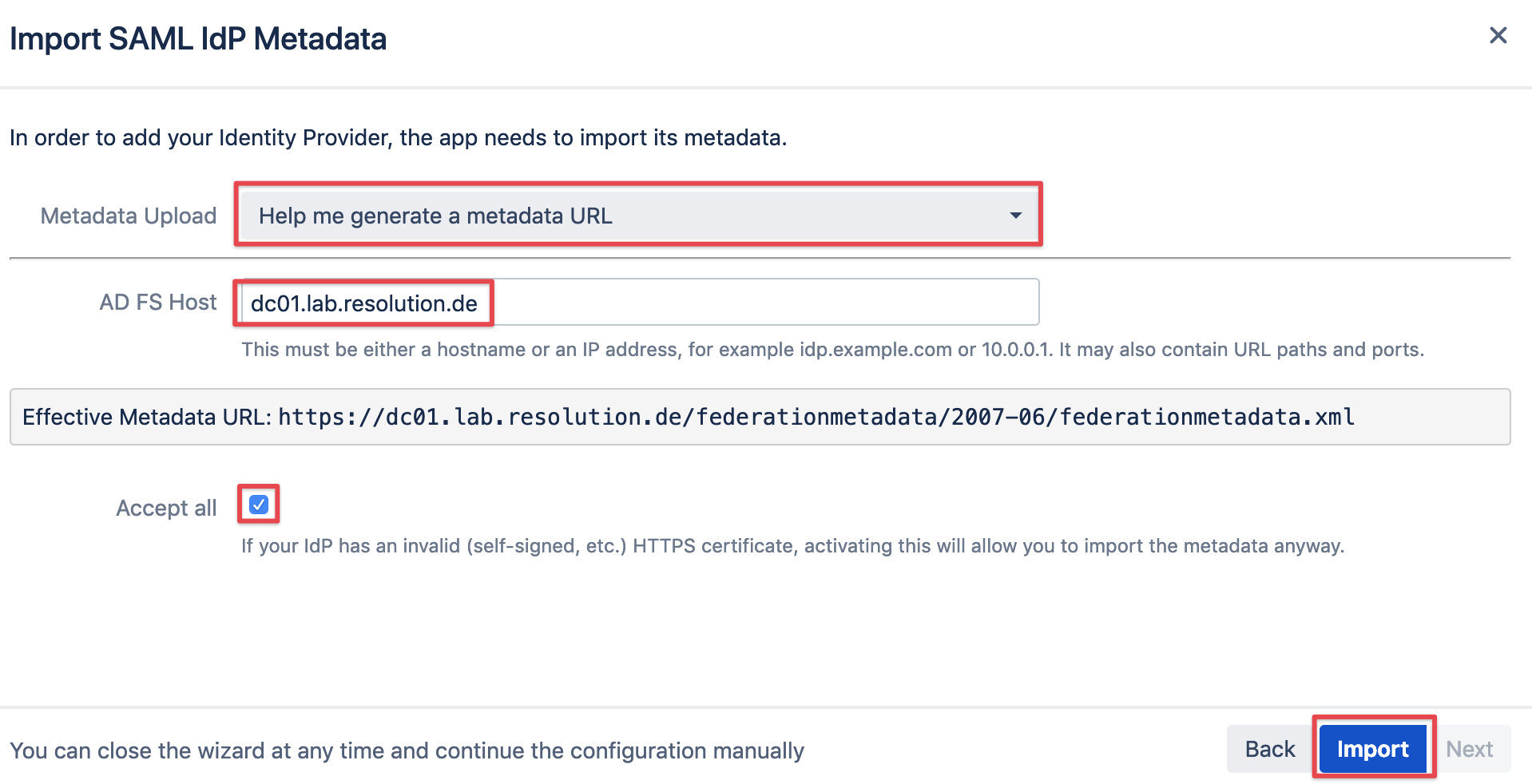
Import via metadata XML file
With no access to ADFS, you can also export the metadata on ADFS and then load it with option 3 or paste its content with option 4.
Exporting can be done with a simple powershell script on ADFS. Just create a script file with extension ps1 and paste the following content:
- # Export MetaData XML to current users desktop
- $mUrl = (Get-ADFSEndpoint | where Protocol -eq "Federation Metadata").FullUrl.ToString()
- $httpHelper = new-object System.Net.WebClient
- $metadataAsString = $httpHelper.DownloadString($mUrl)
- $httpHelper.DownloadFile($mUrl , "C:\Users\$($env:username)\Desktop\metadata.xml")
Once the import of the metadata is complete, you can go ahead and configure the settings described in the following chapters.
Configure remaining SAML SSO app settings
User ID attribute and transformation
It's recommended to leave this option checked, unless you did setup different claim issuance policies,
as described in Configure ADFS/ Claim rules section of the Configure ADFS tutorial.
Click on Next.
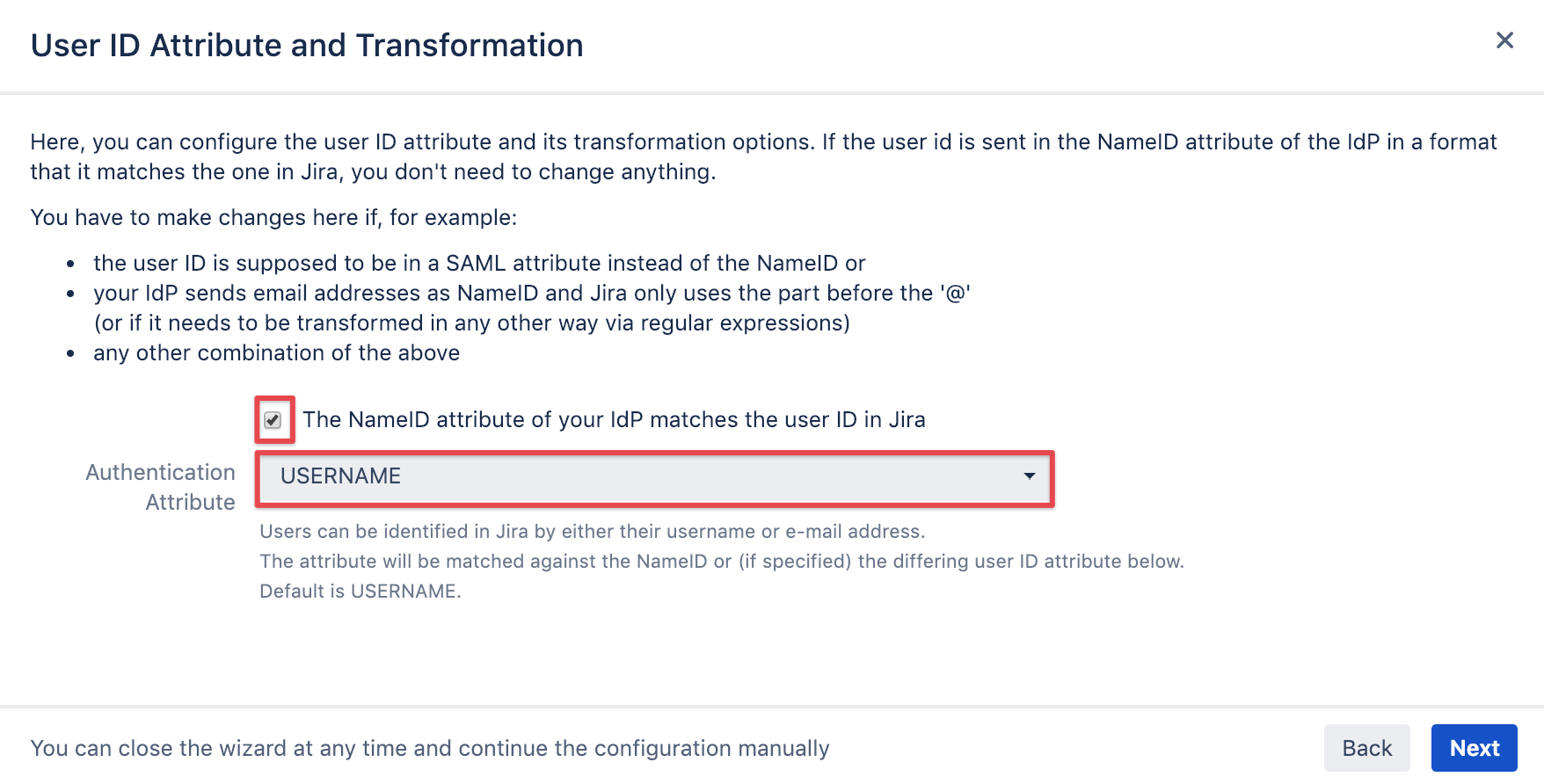
User creation and update
Unless you want to assign groups to users after authentication or planning to use just-in-time provisioning, you should
leave this option unchecked. This can be configured later anytime.
Click Next to proceed.
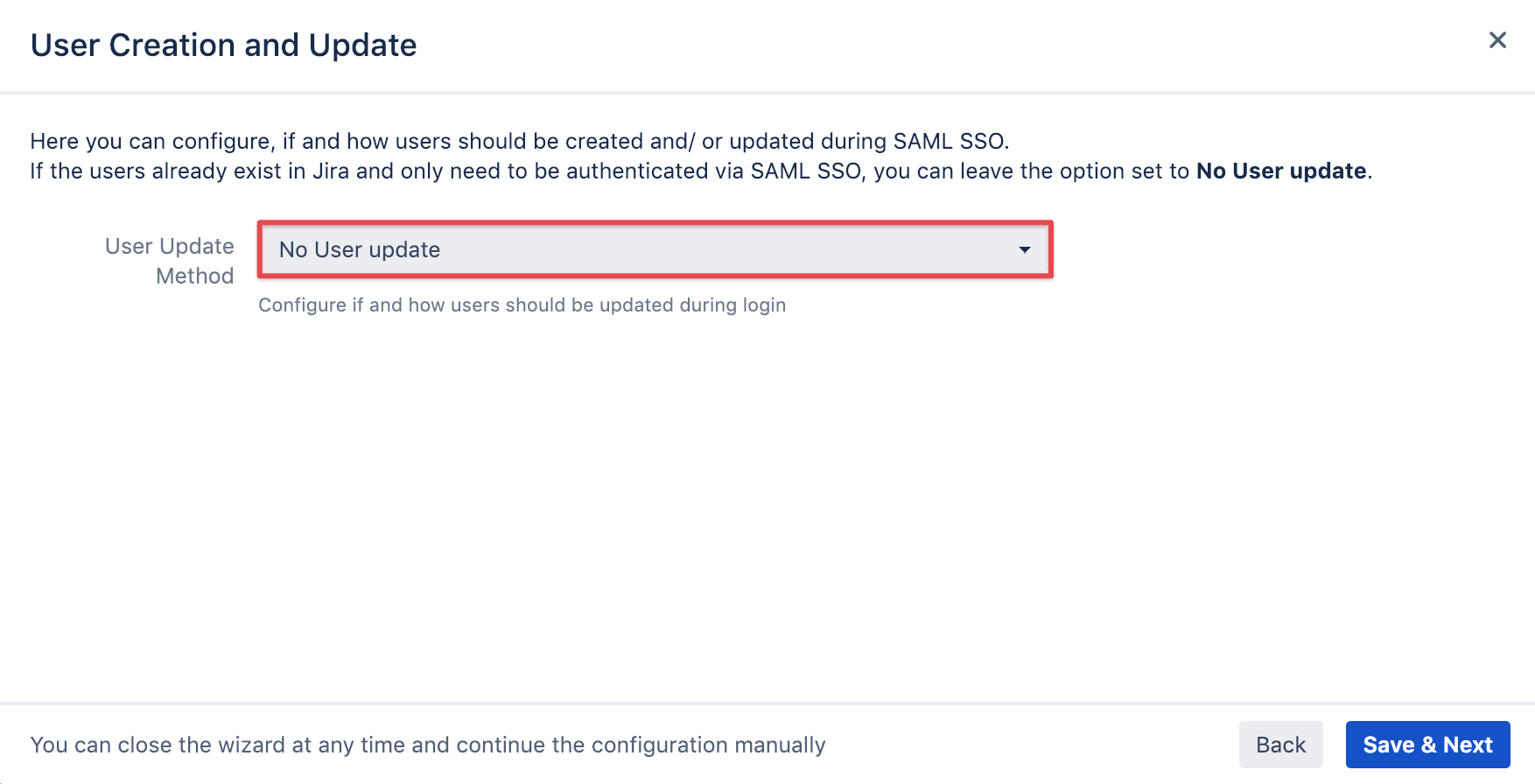
Test configuration of SAML SSO app
The last step when adding the ADFS IdP is a test which can be executed by clicking on the corresponding Start test button.
Copy the link displayed and paste it into a new incognito/ private browsing window, and execute a login with your Identity Provider.
The status of the authentication process is permanently updated in the window.
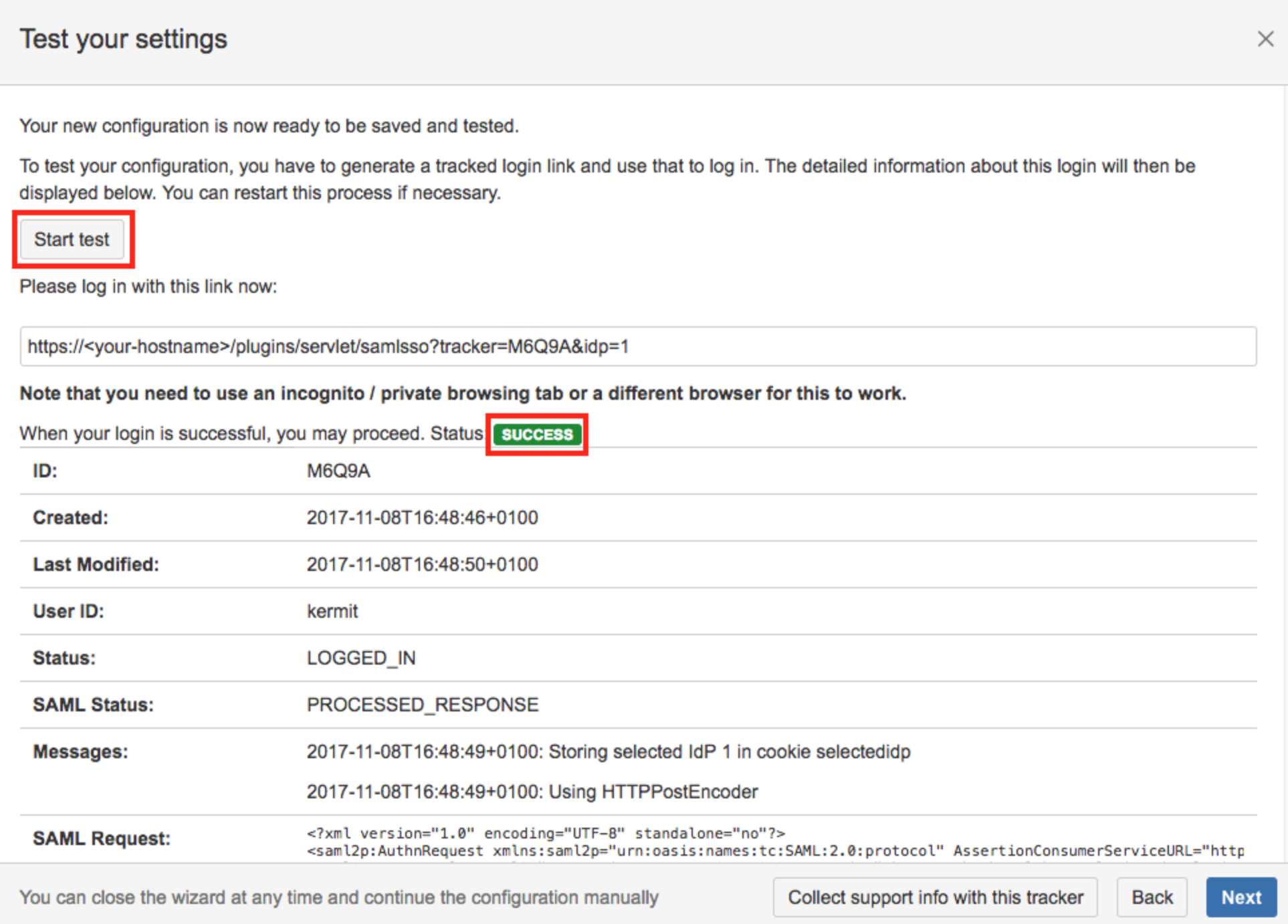
If there is any error at this point you need help with, please refer to the troubleshooting guide, which will also help us, should you open a support ticket with us.
Of course the test window above will display a lot of information about the errors already, but requires some deeper knowledge of the SAML protocol.
Enable login redirection
The last step of adding a new IdP is to configure redirect options.
Selecting Enable SSO Redirect will ensure that users are getting redirected to be logged in via SAML,
instead via the login form as before the SSO setup.
The Override Logged Out URL Method can be left at the default option.
It will redirect users after log out to a default page where they can login again via username and password or SSO again.
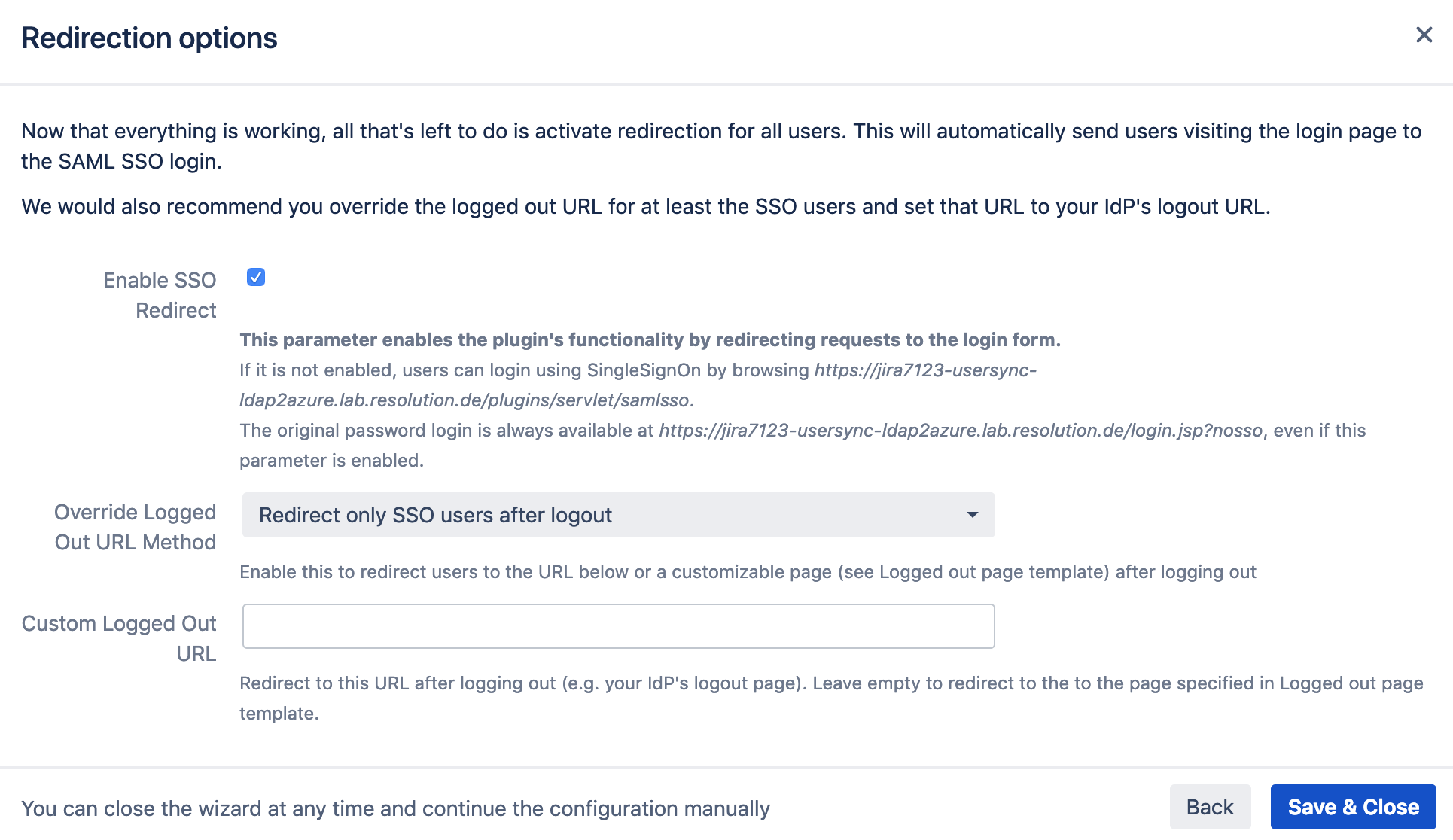
Save & Close to complete the setup and close the wizard. You are now ready to use LDAP with SAML SSO in your Atlassian application.
If Enable SSO Redirect is enabled, you can login to your Atlassian application manually by browsing to the URL that fits your Atlassian application as listed below.
Use this URL, if you need to login a local user unknown to the ADFS or if there are any issues with Single Sign On.
Jira: https://<baseurl>/login.jsp?nosso
Confluence: https://<baseurl>/login.action?nosso
Bitbucket: https://<baseurl>/login?nosso
Bamboo 5: https://<baseurl>/userlogin!default.action?nosso
Bamboo 6: https://<baseurl>/userlogin!doDefault.action?nosso
